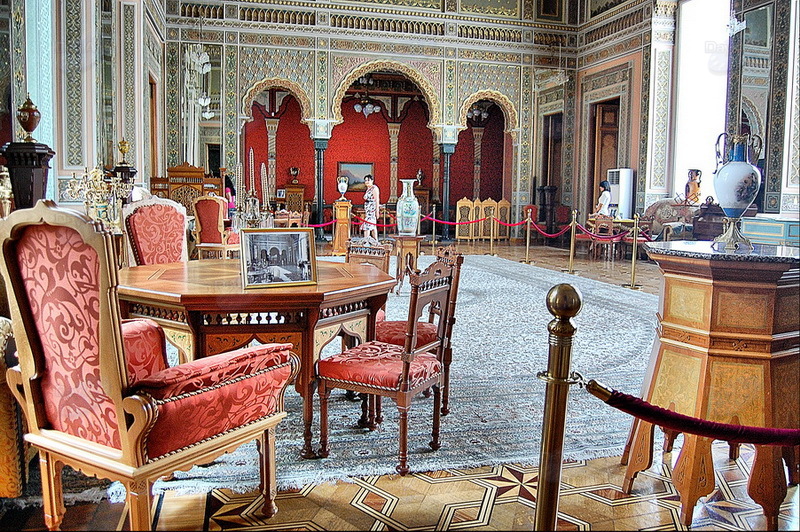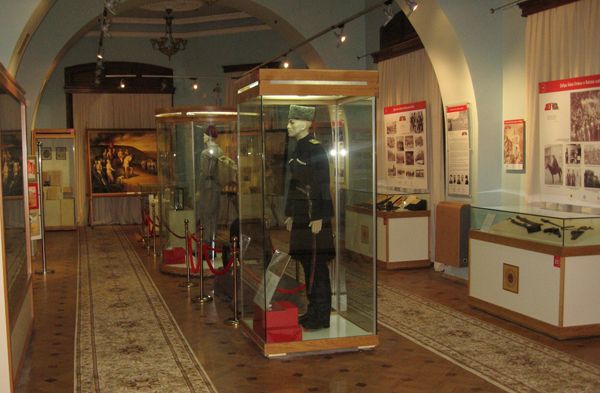NATIONAL HISTORICAL MUSEUM

One of the largest museums in Azerbaijan, the State Historical Museum, founded in 1920, is located in one of the most beautiful places in the city, in the mansion of the famous oil magnate and philanthropist Haji Zeynalabdin Tagiyev, built-in 1895-96. The museum, which began work in May 1921, was called the State Museum of the Azerbaijan SSR until 1936 and played an irreplaceable role in the field of scientific research. On the basis of artistic and historical values in 1920-30, museums of nature, history, theater, literature, religion, and atheism, the Shirvanshahs Palace Museum-Reserve, a manuscript fund (later became the Institute of Manuscripts of the National Academy of Sciences of Azerbaijan) were created.
This museum is engaged in scientific research of all ancient material and cultural monuments on the territory of Azerbaijan. Thanks to the fruitful work of archaeologists in the 60-70s, the museum has become a leading center for archaeological research in the country. The museum has more than 300,000 samples of material and spiritual culture, which are stored in 6 sections. The fund of the department of archeology contains more than 93 thousand exhibits, covering the period of the history of Azerbaijan from the Paleolithic to the Middle Ages. Here are stored tools made of stone, work and household utensils made of copper, iron, earthenware, and porcelain dishes, samples of jewelry. The Numismatics Fund adorns more than 150 thousand coins and banknotes, which are of great importance in the study of the history and statehood of Azerbaijan in different periods. Gold, silver, and copper coins found in the territory of Azerbaijan are one proof of the history of our statehood and the existence of other states. Thanks to a large number of oriental coins in the numismatics fund, Azerbaijan at that time occupied one of the highest places in the USSR. In addition to money, the numismatics fund contains badges, seals, postage stamps, banknotes, which play an important role in the study of the history of our people.
Since the founding of the museum, an ethnographic fund has been operating here, which includes 9000 exhibits related to the economic and everyday life of our people. Exquisitely decorated copper vessels, samples of men's and women's clothing, decorated with beautiful patterns from different regions of Azerbaijan, also have special historical and artistic significance. The museum has also managed to preserve its national value and high quality in the form of a variety of carpets and rugs — "chechim", felt, woven bags, shopping bags, and many other works of art.
The exposition of the second floor shows the end of the 17th century, the beginning of the 19th century, the beginning of the Russian occupation of Azerbaijan — 1801-1813, And the end of 1826-1828, Northern Azerbaijan (1830-1870), XIX century, woodworking, carpet weaving and silk production, the development of trade, economics, science, education, and cultural life, as well as widespread beliefs, customs, the situation in the country during the First World War, the 1918 genocide, and the military-political situation in the country in modern times.
In 2007, a memorial room museum was created in the museum building, dedicated to the famous philanthropist and philanthropist Haji Zeynalabdin Tagiyev and his family. The museum consists of 9 restored halls: Haji Zeynalabdin Tagiyev's room, an oriental-style living room, a library, a billiard room, a dining room, a boudoir, a bedroom, and a dressing room. Here you can see the original furniture and personal belongings of Tagiyev.



